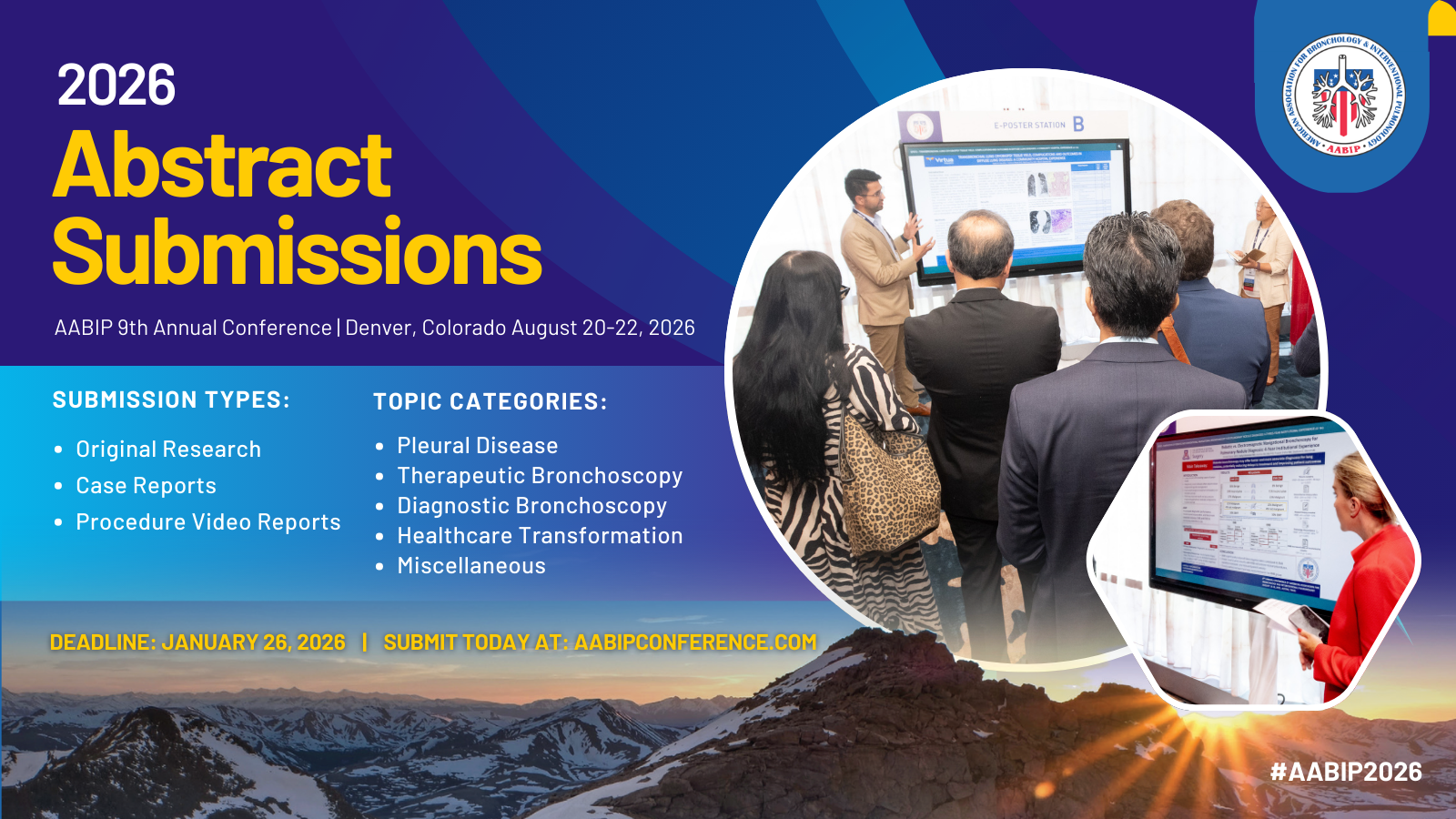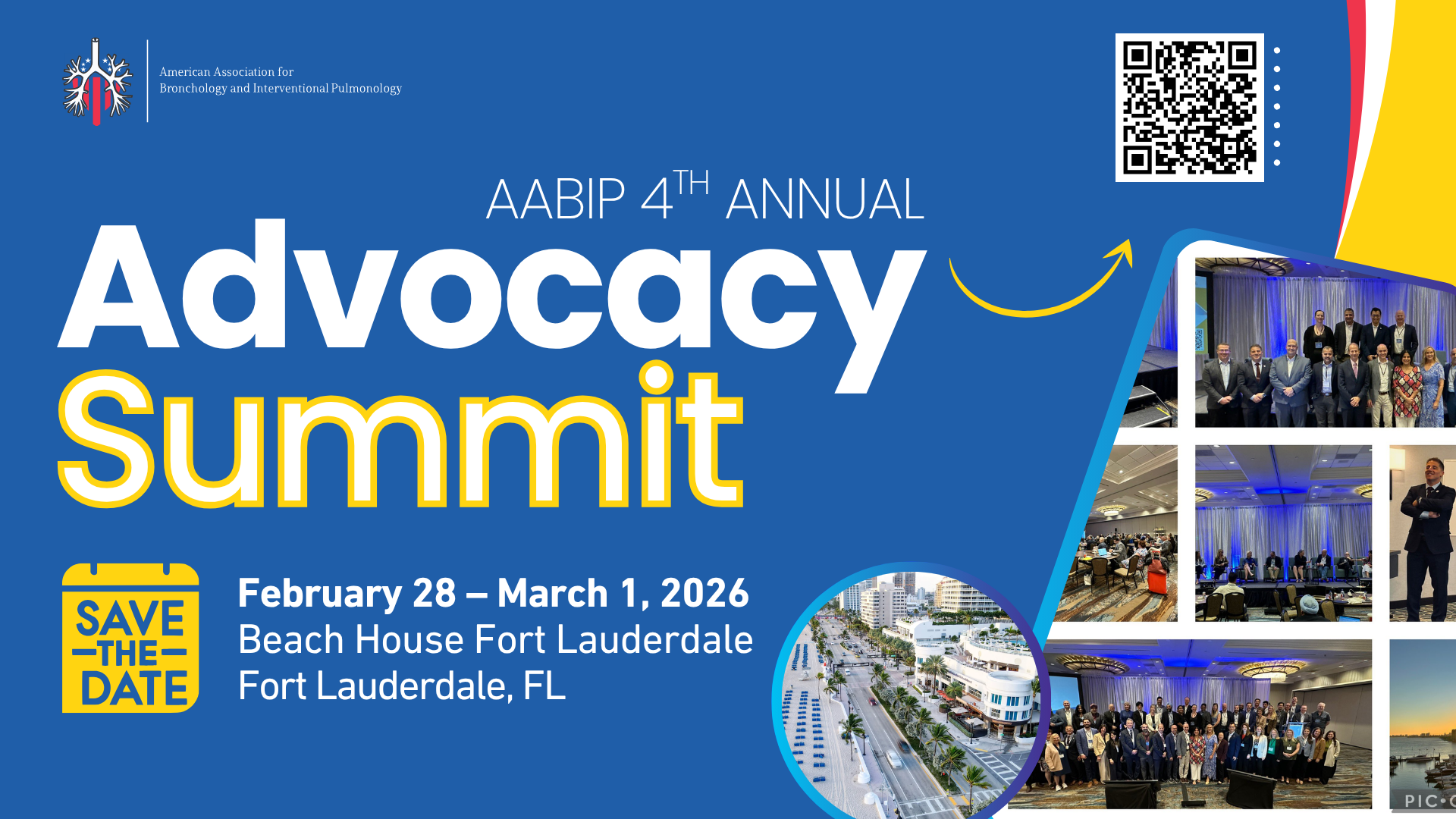AABIP IP Fellow Reading ListAsthma and Other COPD TreatmentsNew bronchoscopic treatment modalities for patients with chronic bronchitis https://pubmed.ncbi.nlm.nih.gov/33472961/ Review Reference: Hartman JE, Garner JL, Shah PL, Slebos DJ. New bronchoscopic treatment modalities for patients with chronic bronchitis. Eur Respir Rev. 2021;30(159):200281. Summary: Chronic bronchitis is a progressive disease that is often difficult to treat. This article reviews new bronchoscopic treatments for this disease that are currently under investigation. Liquid nitrogen metered cryospray, bronchial rheoplasty and balloon desobstruction have the intent of destroying hyperplastic goblet cells and excess submucousal glands. These therapies are in an early phase of clinical research and larger randomized controlled trials are needed to confirm the pilot data available and to evaluate the treatment durability. Targeted lung denervation (TLD) is the ablation of parasympathetic nerves that run along mainstem bronchi to decrease release of acetylcholine, which regulates smooth muscle tone. This modality is at a more advanced stage and promising effects on exacerbation frequency have been shown, however, confirmation of the benefit in improvement in chronic bronchitis symptoms is still needed. Safety of delivering bronchial thermoplasty in two treatment sessions https://pubmed.ncbi.nlm.nih.gov/34844622/ Clinical Trial Reference: Koshy K, Sha J, Bennetts K, Langton D. Safety of delivering bronchial thermoplasty in two treatment sessions. Respir Res. 2021;22(1):307. Background: This is a prospective observational study evaluating the safety of compressing bronchial thermoplasty into two treatment sessions compared with the traditional 3 treatment approach. PICO:Population:
Take home: ABT associated with greater short-term deterioration in lung function associated with greater risk of prolonged hospitalization due to wheezing and which predominantly affected females and ICU monitoring. No statistically significant difference in 30-day hospital readmission. Bronchial thermoplasty in patients with severe asthma at 5 years: the post-fda approval clinical trial evaluating bronchial thermoplasty in severe persistent asthma study https://pubmed.ncbi.nlm.nih.gov/34774528/ Clinical Trial Reference: Chupp G, Kline JN, Khatri SB, et al. Bronchial thermoplasty in patients with severe asthma at 5 years: the post-fda approval clinical trial evaluating bronchial thermoplasty in severe persistent asthma study. Chest. 2022;161(3):614-628. Background: Prospective, open-label, observational, multicenter study. This study is the Post-FDA BT Approval Clinical Trial Evaluating Bronchial Thermoplasty (BT) in Severe Persistent Asthma (PAS2) study which collected data on patients with severe asthma undergoing this procedure. PICO:Population:
Intervention:
Comparison:
Outcome:
Take home: Bronchial thermoplasty improves severe exacerbations, hospitalizations, ED visits and corticosteroid exposure across different asthma phenotypes. This improvement in control persists at least 5 years post treatment. A prospective safety and feasibility study of metered cryospray for patients with chronic bronchitis in COPD https://pubmed.ncbi.nlm.nih.gov/32586881/ Clinical Trial Reference: Garner JL, Shaipanich T, Hartman JE, et al. A prospective safety and feasibility study of metered cryospray for patients with chronic bronchitis in COPD. Eur Respir J. 2020;56(6):2000556. Background: The objective of this study was to evaluate the feasibility, efficacy and safety of metered cryospray (MCS) for management of chronic bronchitis. PICO:Population –
Intervention –
Comparison –
Outcome –
Take home: MCS is safe, feasible and associated with clinically meaningful improvements in multidimensional patient-reported outcomes. Bronchial rheoplasty for treatment of chronic bronchitis. Twelve-month results from a multicenter clinical trial https://pubmed.ncbi.nlm.nih.gov/32407638/ Clinical Trial Reference: Valipour A, Fernandez-Bussy S, Ing AJ, et al. Bronchial rheoplasty for treatment of chronic bronchitis. Twelve-month results from a multicenter clinical trial. Am J Respir Crit Care Med. 2020;202(5):681-689. Background: Bronchial rheoplasty uses an endobronchial catheter to apply nonthermal pulsed electrical fields to the airways. The study evaluated the feasibility, safety, and initial outcomes of bronchial rheoplasty in patients with chronic bronchitis. PICO: Population –
Take home: This study provides the first clinical evidence of the feasibility, safety, and initial outcomes of bronchial rheoplasty in symptomatic patients with chronic bronchitis. Follow-up outcomes of chronic obstructive pulmonary disease patients who underwent dilatation and curettage with the Karakoca resector balloon: A 188-case series over 5 years https://pubmed.ncbi.nlm.nih.gov/30508939/ Clinical Trial Reference: Karakoca Y, Gogus G, Akduman S, Erturk B. Follow-up outcomes of chronic obstructive pulmonary disease patients who underwent dilatation and curettage with the Karakoca resector balloon: A 188-case series over 5 years. Medicine (Baltimore). 2018;97(48):e13400. Background: Patients with GOLD stage III and IV COPD with no symptomatic relief from optimized medical management underwent Karakoca resector balloon dilatation and curettage technique for segmental and subsegmental bronchi by therapeutic bronchoscopy with the goal of compressing hyperplasic goblet cells. PICO: Population –
Intervention –
Comparison –
Outcome –
Take home: Balloon dilatation and curettage is a safe, repeatable and successful technique for medical treatment-resistant stage III/IV COPD. Additional multicenter, larger scale and controlled studies are needed to provide evidence of efficacy and safety. Safety of denervation following targeted lung denervation therapy for COPD: AIRFLOW-1 3-year outcomes https://pubmed.ncbi.nlm.nih.gov/33608007/ Clinical Trial Reference: Pison C, Shah PL, Slebos DJ, et al. Safety of denervation following targeted lung denervation therapy for COPD: AIRFLOW-1 3-year outcomes. Respir Res. 2021;22(1):62. Background: Targeted lung denervation (TLD) is a novel bronchoscopic therapy that disrupts parasympathetic pulmonary nerve input to the lung, thus reducing clinical consequences of cholinergic hyperactivity. The AIRFLOW-1 study assessed safety and TLD dose in patients with moderate-to-severe, symptomatic COPD. This analysis evaluated the long-term impact of TLD on COPD exacerbations, pulmonary function, and quality of life over 3 years of follow up. PICO: Population –
Intervention –
Comparison –
Outcome –
Take home: TLD in COPD patients demonstrated a positive safety profile out to 3 years with no late-onset serious adverse events related to denervation therapy. Clinical stability in lung function, quality of life, and exacerbations were observed in TLD treated patients over 3 years of follow up. Two-year outcomes for the double-blind, randomized, sham-controlled study of targeted lung denervation in patients with moderate to severe copd: airflow-2 https://pubmed.ncbi.nlm.nih.gov/33177818/ Clinical Trial Reference: Valipour A, Shah PL, Herth FJ, et al. Two-year outcomes for the double-blind, randomized, sham-controlled study of targeted lung denervation in patients with moderate to severe copd: airflow-2. Int J Chron Obstruct Pulmon Dis. 2020;15:2807-2816. Background: Targeted lung denervation (TLD) disrupts parasympathetic pulmonary innervation of the lung and reduces clinical consequences of cholinergic hyperactivity and its impact on COPD exacerbations. The AIRFLOW-2 study assessed the durability, safety and efficacy of TLD additive to optimal drug therapy compared to sham bronchoscopy and optimal drug therapy alone in subjects with moderate-to-severe, symptomatic COPD two years post randomization. PICO: Population –
Intervention –
Comparison –
Outcome –
Take home: TLD demonstrated a durable effect of significantly lower risk of severe AECOPD over 2 years. Lung function and quality of life remained stable following TLD.
|








